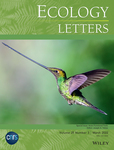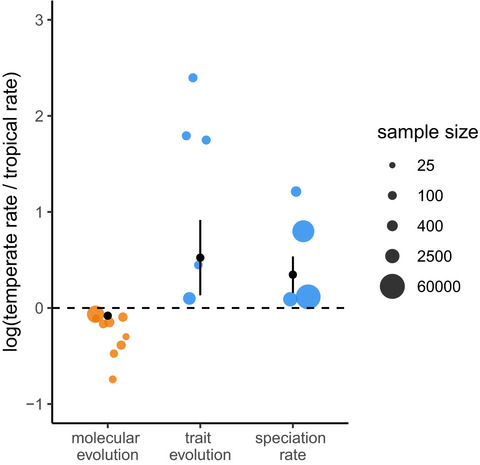Journal list menu
Export Citations
Download PDFs
Cover Image
Cover Image: Volume 25 Number 3, March 2022
- Page: i
- First Published: 24 February 2022
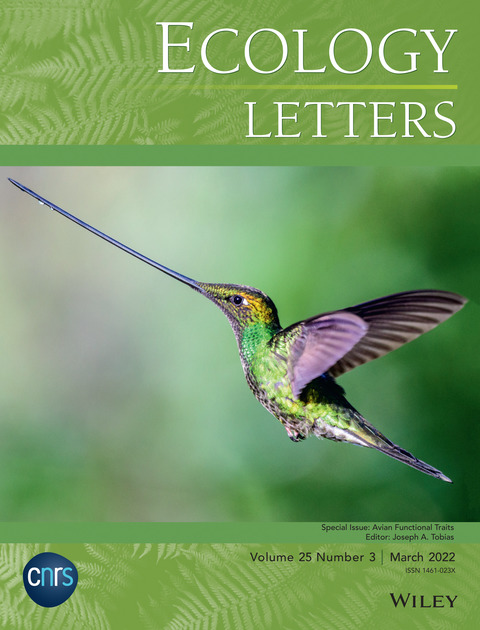
The cover image is based on the Letter AVONET: morphological, ecological and geographical data for all birds by Tobias et al., https://doi.org/10.1111/ele.13898. The sword-billed hummingbird (Ensifera ensifera) is exquisitely adapted to its trophic niche as an aerial pollinator of flowerings plants (angiosperms) in the high Andes. A new global dataset of detailed ecomorphological traits for all birds offers a resource with numerous potential uses in ecology, evolution, and conservation biology. Image Credit: Cover Image © Oliver Krüger. Reproduced with permission.
Issue Information
EDITORIAL
A bird in the hand: Global-scale morphological trait datasets open new frontiers of ecology, evolution and ecosystem science
- Pages: 573-580
- First Published: 24 February 2022
LETTERS
AVONET: morphological, ecological and geographical data for all birds
- Pages: 581-597
- First Published: 24 February 2022

Existing morphological trait datasets for major taxonomic groups are highly incomplete, limiting their utility to ecologists and evolutionary biologists. We present a global dataset containing comprehensive morphological information, coupled with ecological and geographical variables, for all bird species. This detailed assessment of continuous trait variation across 11,009 species offers a global template for testing hypotheses and exploring the evolutionary origins, structure and functioning of biodiversity.
Global biogeographic patterns of avian morphological diversity
- Pages: 598-610
- First Published: 24 February 2022
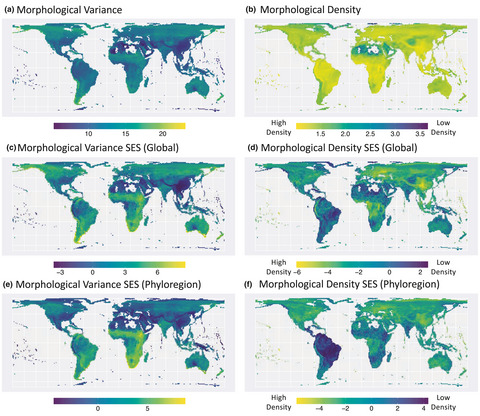
Our work reveals novel insights into the structure and drivers of avian assemblages. We argue that evolutionary history plays a key role in shaping assemblage structure notably with evolutionarily old species contributing to niche expansion, and evolutionarily young species contributing to niche packing in the tropics. We further suggest that tropical niche packing is facilitated by high productivity and potentially, though not directly tested here, the long-term stability of the tropics.
The causes and ecological context of rapid morphological evolution in birds
- Pages: 611-623
- First Published: 24 February 2022
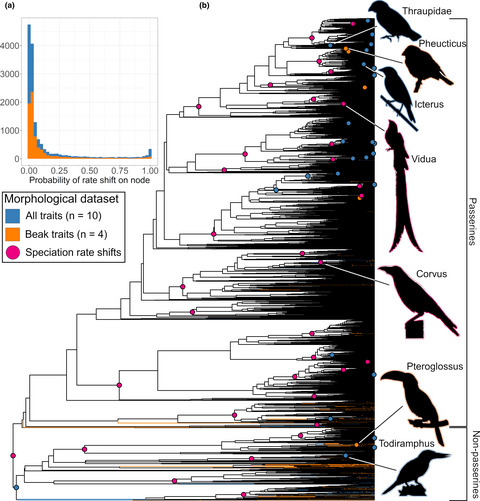
Understanding why some lineages experience pulses of pronounced phenotypic evolution is a persistent challenge. Our results show that these events are independent of bursts of lineage diversification, but instead related to stability in habitat evolution, where by lineages subdivide ecological space.
Flight hampers the evolution of weapons in birds
- Pages: 624-634
- First Published: 24 February 2022
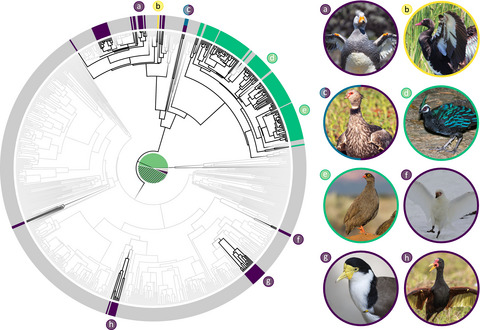
Birds are remarkable for their diverse colours, songs, ornaments and displays, but not for their weapons. Here, we show that their costly mode of locomotion—flight—helps explain that. Bird species that depend more on flight possess on average fewer or no bony spurs, likely because these specialised weapons are often too costly to carry in flight.
The latitudinal gradient in rates of evolution for bird beaks, a species interaction trait
- Pages: 635-646
- First Published: 24 February 2022
Sex roles in birds: Phylogenetic analyses of the influence of climate, life histories and social environment
- Pages: 647-660
- First Published: 24 February 2022
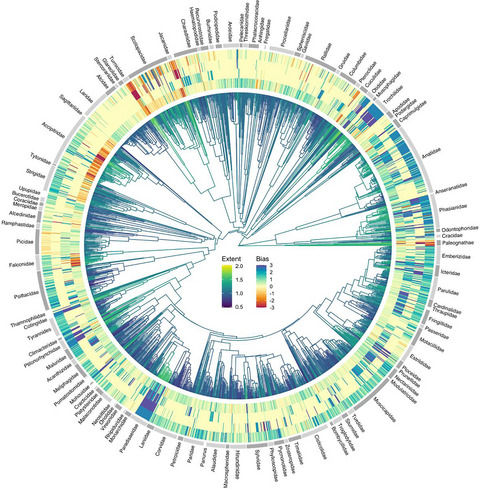
Sex roles describe sex differences in courtship, mate competition, social pair-bonds and parental care. A key challenge is to identify associations among the components and the drivers of sex roles. We found extensive variation and lability in proxies of sex roles, indicating remarkably independent evolution among sex role components, and that the social environment is central to explaining variation in sex roles among birds.
A test of Darwin’s naturalization conundrum in birds reveals enhanced invasion success in the presence of close relatives
- Pages: 661-672
- First Published: 24 February 2022
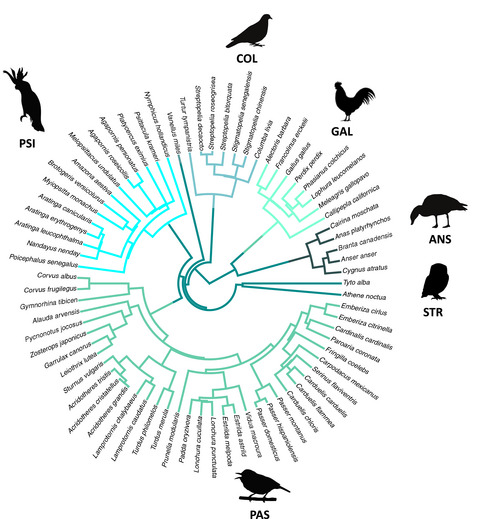
Despite biological invasions being one of the main global environmental problems, there is still no theoretical or empirical agreement on whether a high phylogenetic relatedness between exotic and native species positively or negatively affects invasion success. We show that in birds invasion success generally increases with the presence of closely-related species, but that predictive accuracy largely depends on considering the influence of human-related disturbances in facilitating invasions.
Global impacts of climate change on avian functional diversity
- Pages: 673-685
- First Published: 24 February 2022
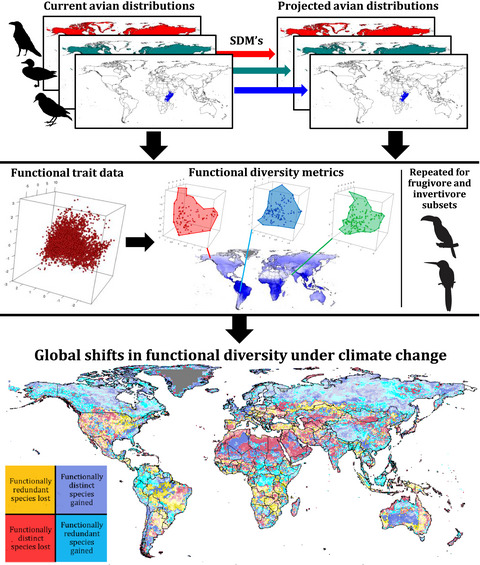
Climate change is expected to drive geographical range shifts and fluctuations in species richness worldwide, but the effect of these changes on functional diversity remains unclear. We use morphometric and ecological traits for 8268 bird species to estimate the impact of climate change on avian functional diversity (FD). The results show that climate change is likely to drive continental-scale shifts in avian FD that differ across trophic niches, with implications for the functioning and resilience of future ecosystems.
Global plant-frugivore trait matching is shaped by climate and biogeographic history
- Pages: 686-696
- First Published: 24 February 2022
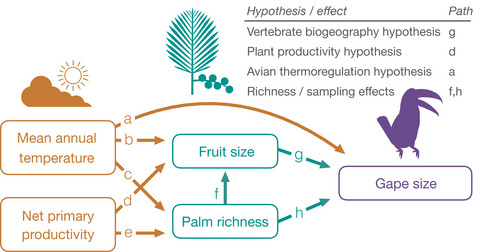
We quantified global patterns and drivers of the functional biogeography of mutualistic trait matching using a unique gape size dataset for nearly all avian frugivores, paired with data on palm fruit size. We find bird gape size and palm fruit size are globally coupled, and that this coupling is stronger in the tropics. In addition, climatic constraints, biogeographic history and richness effects all have important, though sometimes indirect, influences on trait matching patterns.
Diversity and extinction risk are inversely related at a global scale
- Pages: 697-707
- First Published: 24 February 2022

We use comprehensive estimates of avian taxonomic, phylogenetic and functional diversity to characterize the global relationship between multiple dimensions of diversity and extinction risk in birds, focusing on contemporary threat status and latent extinction risk. We find that more diverse assemblages have lower mean IUCN threat status despite being composed of species with attributes that make them more vulnerable to extinction, such as large body size or small range size. The reduction of current threat status associated with greater diversity far outweighs the increased risk associated with the accumulation of extinction-prone species in more diverse assemblages.




